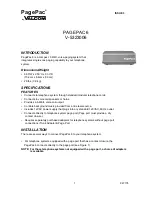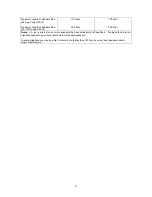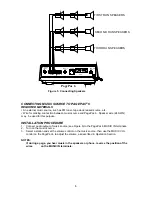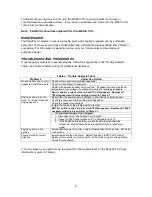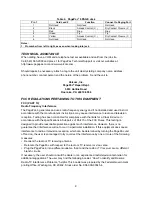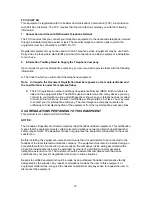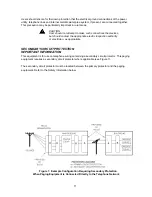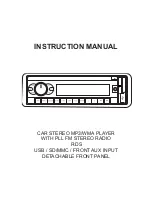
7
Figure 6. Connections Using an External Music Source
Those who use paging systems to rebroadcast copyrighted music are required to obtain licenses
from and pay fees to copyright owners. This usually involves obtaining licenses and paying fees to
either ASCAP and/or BMI (American Society of Composers, Artists and Producers, Broadcast
Music Inc.). It is the user's obligation to obtain any license required and pay any fees.
Whenever possible, the PagePac 6 paging system should be plugged into the same AC power
receptacle as the voice system.
OPERATION
Paging procedures differ depending on the requirements of your telephone system and how it is
connected to PagePac 6. If your system is connected using a PagePac
®
6 Port Saver, pay
particular attention to the pertinent instruction section below.
PAGING WHEN CONNECTED THROUGH A PAGE PORT OR A PAGEPAC
®
TRUNK ADAPTER
The exact procedure for paging on your particular telephone system is explained in the user's
manual that accompanies the telephone system. In general, though, the steps are as follows:
1. Access the paging function as required by your telephone system. If PagePac 6 is connected
through a page port, you will probably push a button or dial a code to access the function. If
PagePac 6 is connected through a PagePac Trunk Adapter, you will follow your telephone
system’s requirements for accessing the line reserved for paging.
2. Make the page.
3. Replace the telephone handset gently (remember you are still connected to the loudspeaker).
This will prevent loud noises from being heard over the paging system.
ADJUSTING PAGE AND MUSIC VOLUME
Volume controls on the rear of PagePac 6 allow you to adjust the volume of paging and
background music independently.
To adjust paging volume, turn the PAGE VOL control clockwise to increase or counterclockwise to
decrease volume.

